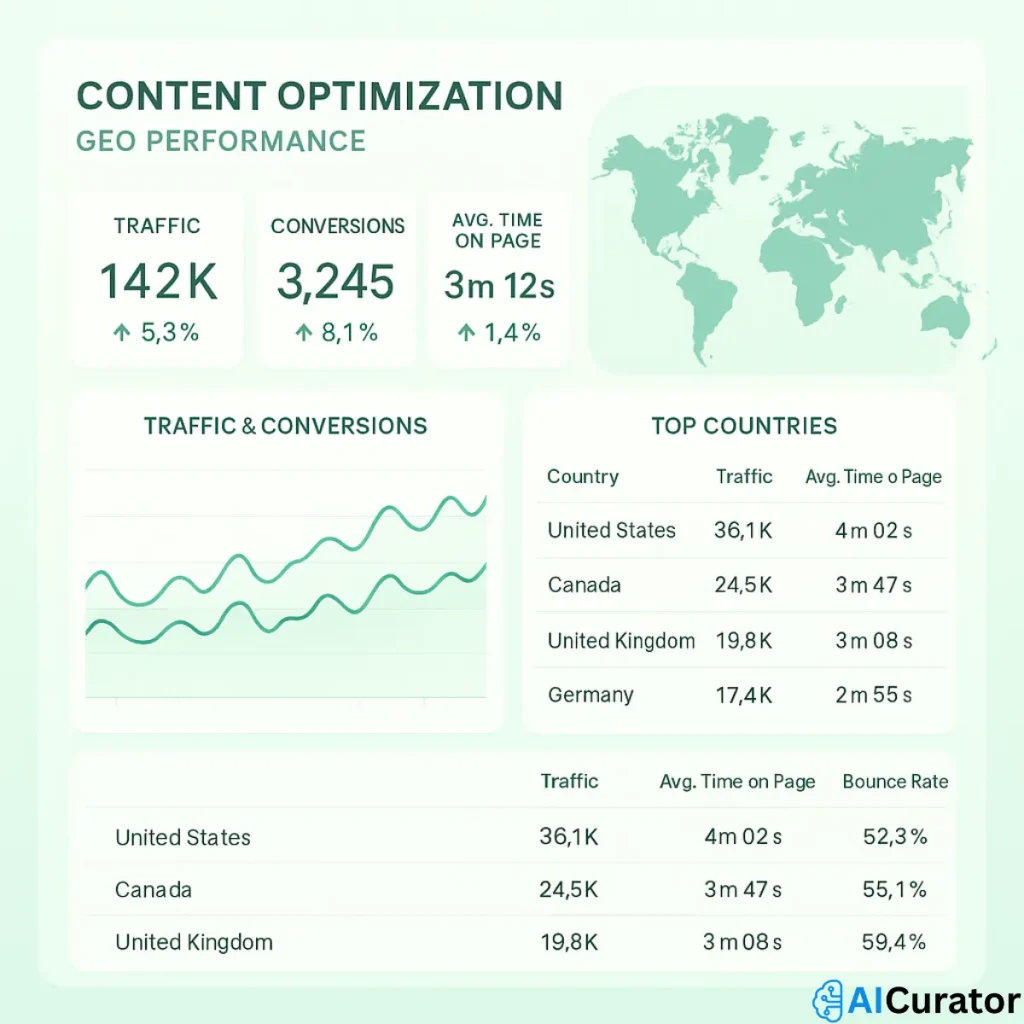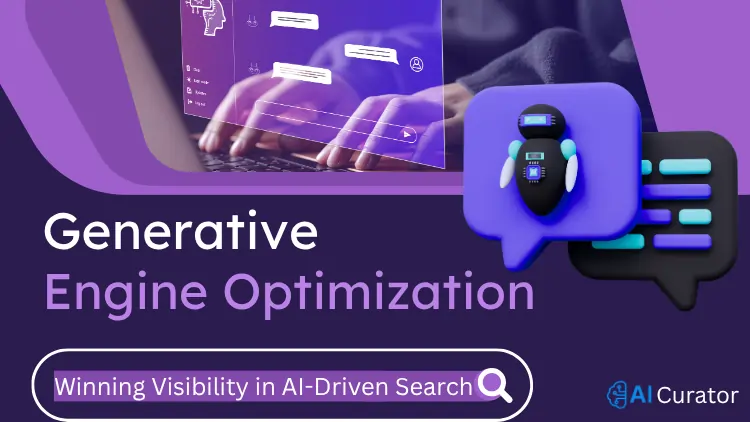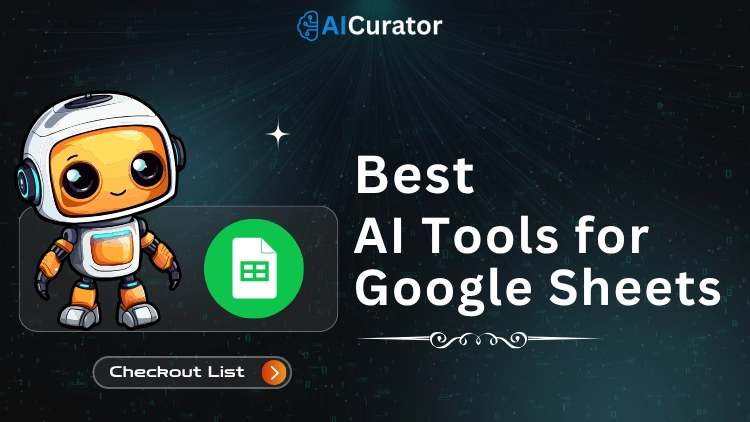The SEO game just got flipped upside down, and most marketers are still playing by yesterday's rules. While you're obsessing over traditional search rankings, smart brands are already dominating the AI-powered search revolution with Generative Engine Optimization (GEO).
This isn't just another buzzword—it's the secret weapon that's making content appear in ChatGPT, Perplexity, and Google's AI overviews while competitors get left behind.
Ready to crack the code on AI-driven search optimization and watch your visibility explode across generative engines?
What is Generative Engine Optimization (GEO)?
Generative Engine Optimization (GEO) is the practice of preparing your content so that AI search engines can easily discover, understand, and cite it in their answers. While traditional SEO focuses on climbing the rankings of search engine results pages (SERPs), GEO aims to get your brand mentioned or directly quoted within the AI's generated response.
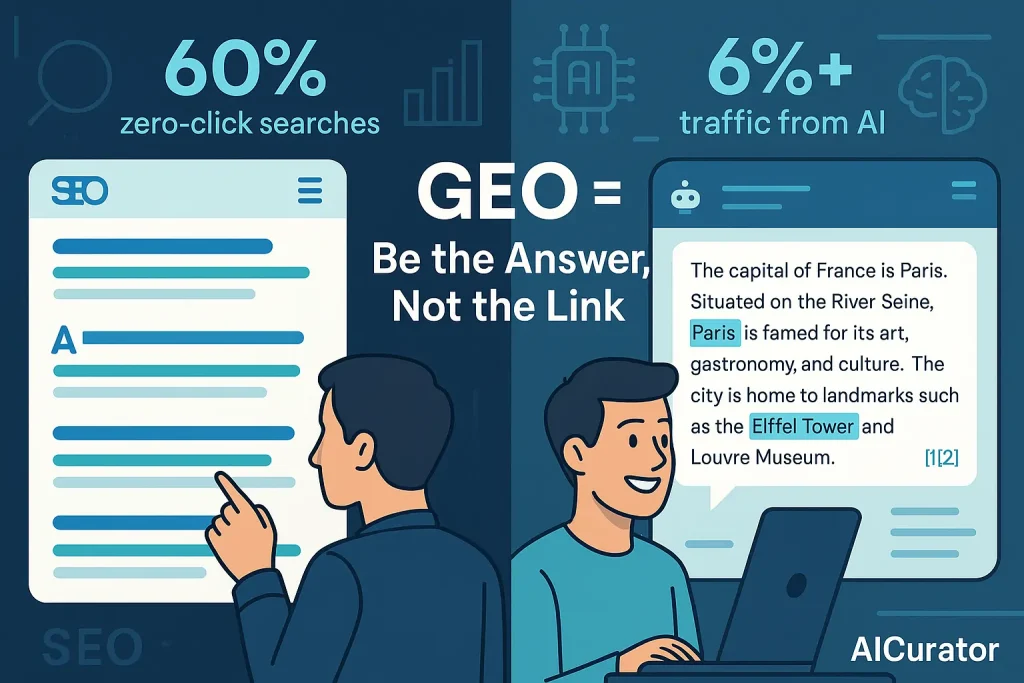
This matters because AI is changing how people search. Many users now get all the information they need from the AI's answer without ever clicking on a website link, a phenomenon known as a “zero-click search.”
Some reports indicate that up to 60% of searches now conclude without a click-through to another site. With AI search traffic already accounting for over 6% of web traffic and expected to grow, becoming invisible in AI answers means losing a huge chunk of your audience.
🚀 Why GEO is a Game-Changer for Your Website
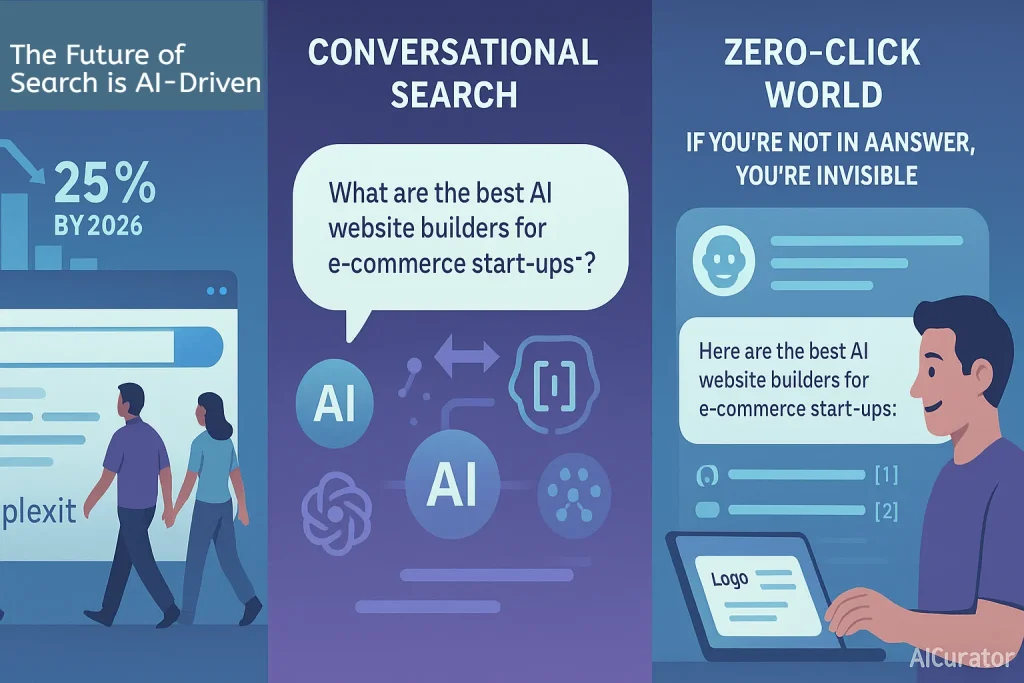
Adopting a GEO strategy isn't just a good idea; it's becoming essential for digital survival. AI search is not a fleeting trend; it is the future of information discovery.
🤖✨ The Future of Search is AI-Driven
Experts predict that traditional search engine traffic could shrink by as much as 25% by 2026, with that volume moving to AI chatbots and virtual agents. Early adopters of GEO are already seeing their brands appear in responses from ChatGPT, Perplexity, and other AI tools, gaining a significant advantage.
💬⚡ Adapting to Conversational Search
User behaviour has shifted from short, punchy keywords to full, conversational questions. People now ask AI tools multi-step questions like, “What are the best AI website builders for e-commerce start-ups?” instead of just typing “AI website builder.” GEO helps you align your content with this natural, question-based search style.
🔗🚫 Winning in a Zero-Click World
Since AI tools provide direct answers, fewer people click through to websites. This has caused a drop in referral traffic for many businesses. GEO ensures your brand remains part of the conversation by getting featured directly in the AI-generated answer, providing valuable visibility and building trust even without a click.
🌐 SEO vs. GEO: A Partnership for Visibility
GEO and SEO are not rivals; they are two sides of the same coin, working together to maximise your online presence. Ignoring either puts your visibility at risk.
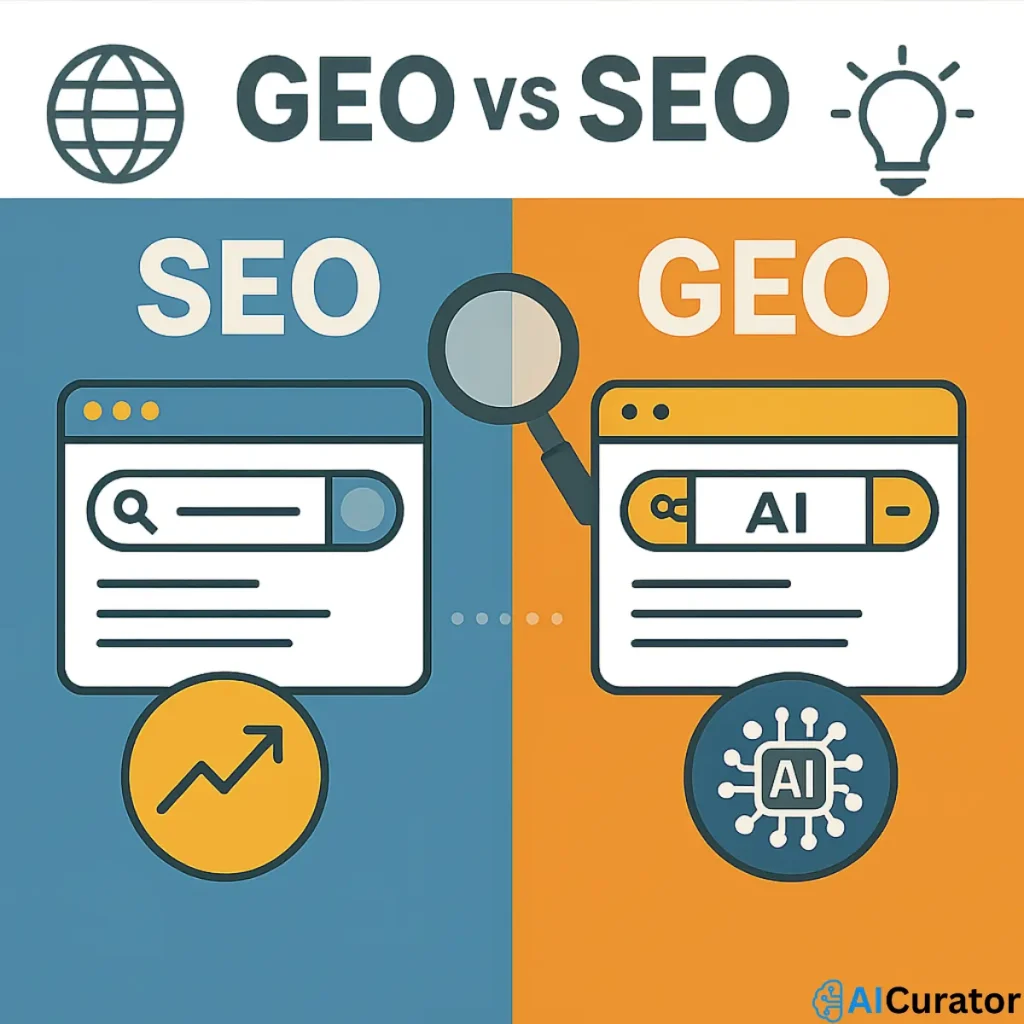
Understanding their differences is key to building a winning strategy.
| Feature | Traditional SEO | Generative Engine Optimization (GEO) |
|---|---|---|
| Primary Goal | Rank high in a list of website links (SERPs). | Get cited or featured within an AI-generated answer. |
| Content Focus | Optimised for specific keywords, meta tags, and backlinks. | Optimised for conversational queries, structured data, and clarity. |
| Authority Signals | Backlinks from other reputable websites are a primary signal. | Citing credible sources, including expert quotes, and providing original data. |
| User Interaction | Users click on individual links to find information. | Users receive a direct, synthesised answer, reducing the need for clicks. |
| Performance Metrics | Measured by keyword rankings, organic traffic, and conversions. | Measured by brand mentions in AI answers, direct brand searches, and quality of traffic. |
🤖 A Step-by-Step Guide to Implementing GEO
Ready to get your content seen by AI? Here's a practical guide to implementing GEO on your website.
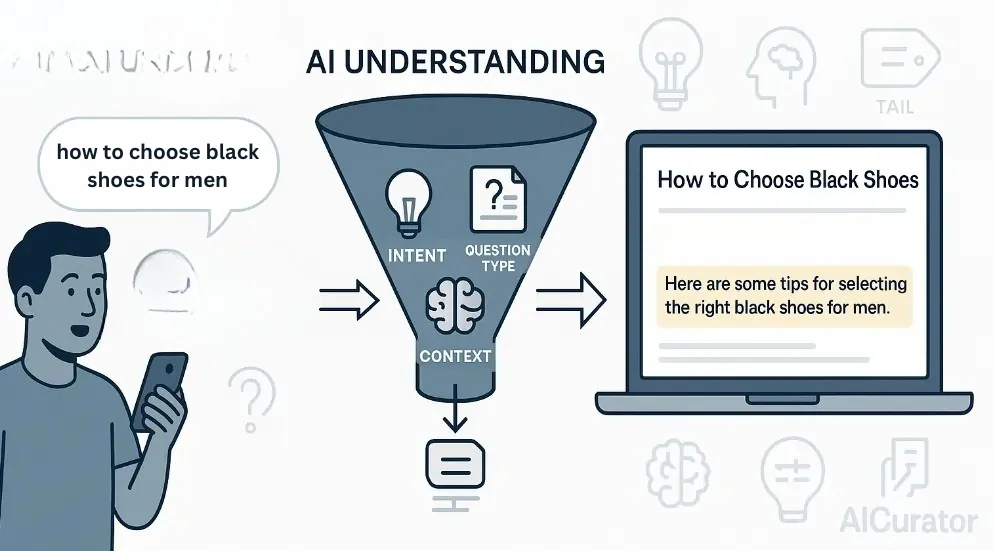
Step 1: Focus on Conversational Queries and User Intent
AI engines are designed to answer questions. Your content needs to reflect this by targeting long-tail informational queries that mirror how people speak.
Step 2: Build Authority with High-Quality Content (E-E-A-T)
AI models prioritise content that is trustworthy, well-researched, and authoritative. Adhering to Google’s E-E-A-T (Experience, Expertise, Authoritativeness, Trustworthiness) guidelines is more important than ever.
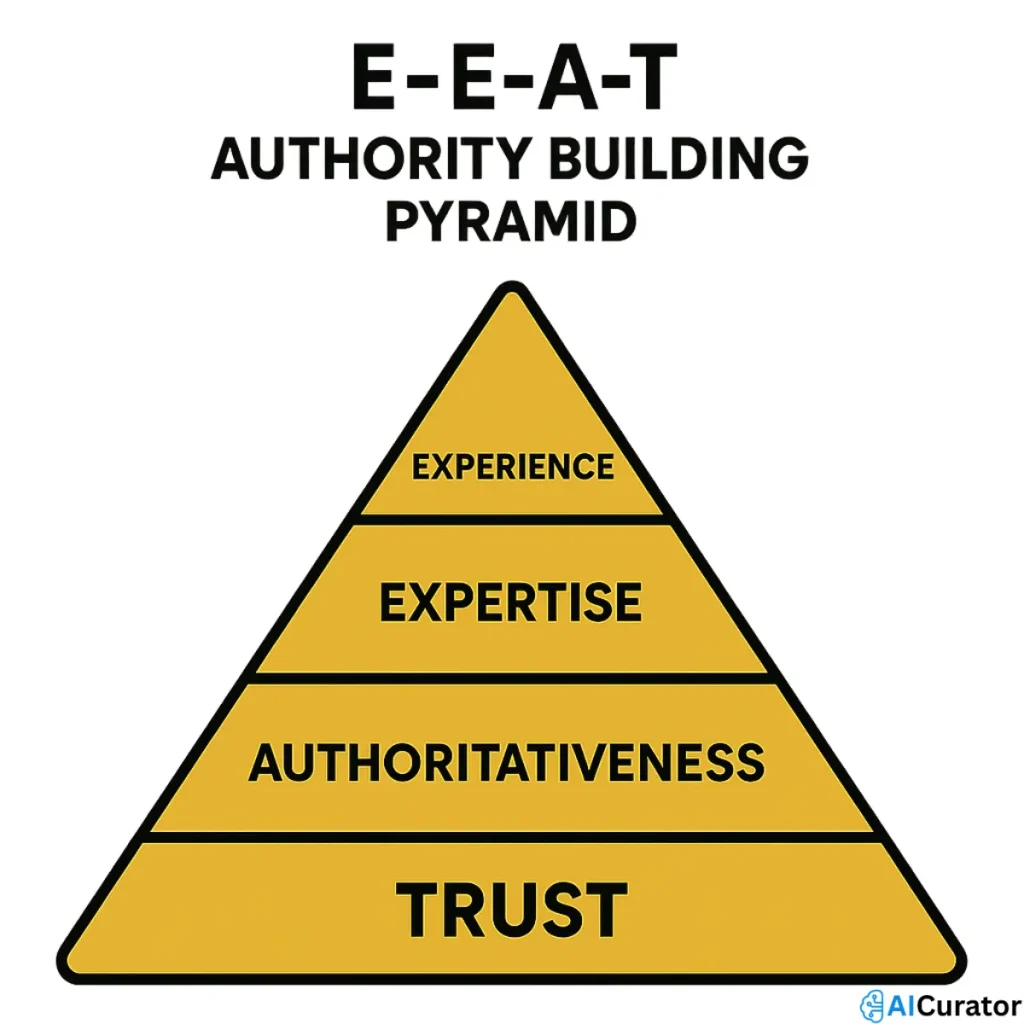
Step 3: Structure Your Content for AI Readability
AI crawlers need to understand your page's content quickly and efficiently. A clear structure is crucial.
Step 4: Master Technical GEO
Beyond the content itself, certain technical adjustments can significantly improve your AI visibility.
Step 5: Leverage Multimedia Content
GEO isn't just about text. AI engines analyse images, videos, and infographics to understand the full context and value of your content.
🧰 Tools to Power Your GEO Strategy
Several tools can help you optimise your content for AI search.
- AI-Powered Content Tools: Tools like SurferSEO and Clearscope analyse top-ranking pages and provide data-driven suggestions to improve your content's depth and clarity.
- Comprehensive SEO Suites: Platforms like SEMrush and Ahrefs now include AI features that help with keyword research, competitor tracking, and content optimization.
- Visibility Tracking: You can track your performance using Google Search Console’s AI overview reports, which show how often your content appears in AI answers. You can also directly ask tools like ChatGPT or Perplexity questions related to your niche to see if your brand is mentioned.
🤖📈 Measuring Success in the Age of AI
GEO requires a new way of thinking about performance metrics.
